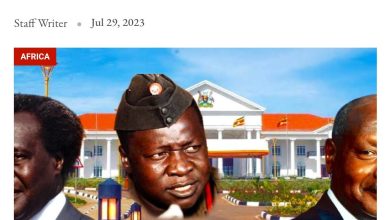A Reflection On The Sugar Industry In Uganda: Big Verses Small Factories/Out Growers
This In Essence Means That If The Executive Does Not Generate Business, The Legislature (MPs) Initiates The Business By Identifying The Problems In Their Respective Constituencies For The Executive (Cabinet) To Respond To. This Is The Binary Between Parliament And The Executive
Uganda Today: About the Interviewee
Mahir Balunywa is writing his PhD in Interdisciplinary Studies, with focus on International Political Economy (IPE), looking at the Food Security and the Land Question in Busoga sub region. He is the author of “The Collapse of Local Governments and Decentralization Policy in Uganda, published(2012) by Lambert Publishers, UK, When Individual and Institutional Interests Clash: Governance dilemmas at the Islamic University in Uganda (2019- In draft form), The Operations of the State in a free Market Economy, Bipolar Colonial relations in the domain of Busoga(Conference paper-School of Oriental and African Studies-London), Domesticity and the colonial project in Africa-Eritrea.(Kindly goggle the name for details and other academic pieces)
A Reflection On The Sugar Industry In Uganda: Big Verses Small Factories/Out Growers
Joint Discussion
By
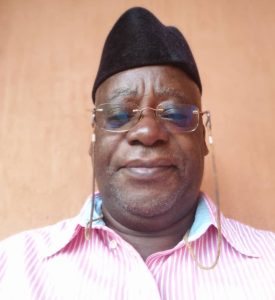

Mahiri Balunywa & F.C Oweyegha Afundaduula
Abstract
This paper, formatted in a Question–Answer approach interrogates the underlying challenges encased in promoting large long established Sugar factories in Uganda at the expense of the small-scale out-growers indigenous sugar factories. The central argument inhere is premised on the position that small scale factories should be supported by the government to grow and promote competitive economies of scale, there by discouraging monopolies. Basing on this argument, the presenters quash the concept of zoning sugar factories and out growers in the interest of a liberalized Ugandan economy.
Afunaduula interviews Mahir Balunywa:
- My first question is: Uganda is faced with so many un-negotiated, unresolved issues, but we are going on as if they do not exist. They include the Northern Question, the Asian Question, The Buganda Question, the Rwandese Question, the Constitutional Question, the Governance Question, the Plantation versus small scale Farming Question, the GMO question, the Militarisation of Agriculture Question, the Sugar Question and the Palm Oil Question, to name but a few. What is your critical view of this scenario?
- This proves that Uganda is besieged in a multitude of endless questions, old questions giving rise to new questions and new questions giving rise to new problems. So Uganda as a country is now problematic.
Ideally these problems are supposed to turn into bills and clear policies for parliamentary debates. Unfortunately, both Cabinet and Parliament have gone into slumber for reasons best known to themselves.
- But Balunywa aren’t you blaming Parliament unfairly? Isn’t it true that it is Cabinet, which designs policies and Bills for Parliament to debate and approve or reject?
- As a student of public policy science, I know more than you would think. Ideally bills are part of the business that the Executive brings to Parliament. However, at times the Executive needs to be tickled to swing into action by the legislature through problem identification, which then initiates the Cabinet agenda.
This in essence means that if the Executive does not generate business, the Legislature (MPs) initiates the business by identifying the problems in their respective Constituencies for the Executive (Cabinet) to respond to. This is the binary between Parliament and the Executive.
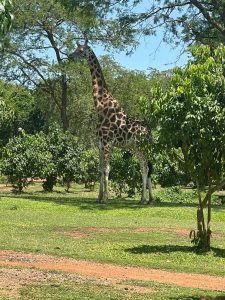
- Are you confirming we have a governance question or governance problem?
- We do not have one at the exclusion of the other. We have both. They are mutually inclusive.
.OA Isn’t that semantics? Where is the difference?
- No no it is not semantics. Thomas Dye, a classical authority on public policy-making, distinguishes the two -governance Question and governance problem. He says governance question is one where the relationship between the Executive and Legislature is either unclear or mixed up. Governance problem emerges out of the incompetence of the actors involved, and this gives rise to problems like policy abortion and policy miscarriage. Examples of governance question include policy confusion, policy dilemmas.
- Do you know what? You have to explain all these bombastic terms you have bombarded me with.
- Okay Mzee. Let me start with policy abortion. This is when a policy, which passed through proper legal procedures, upon enactment fails to be implemented or is rejected by the policy consumers (the people). Policy miscarriage is when a policy, which was supposed to turn into law is either rejected by the President or Parliament. Examples are the Domestic Relations Bill, which was rejected by Parliament, and the 2016 Sugar Bill, which was rejected by the President twice.
Policy dilemma is when there is uncertainty between the theory and practice of a policy. This creates a policy lacuna; that is a gap (or tabula-rasa) within the policy. Policy Dilemma is when there is confusion among the actors right from the time the bill transmutes into a policy or law (for example, the Presidential Age Limit Law, which was contested but Court ruled that it was okay.
- Thank you Mahir. I want us now to discuss the Sugar Industry. Give me a brief history of the sugar industry in Uganda.
- Sugarcane is not an indigenous crop in Uganda. The early Indian traders introduced it in Uganda in 1862. By then it was merely for chewing. In 1900 it came to be recognized as a cash crop by the British Colonial Government but grown on a small scale by the two Asian families of Muljibhai Madhvani and Nanja Kalidas Mehta.
In 1930 it became an export-oriented crop to Latin America, Caribbean and Asia. Since then Asian became out-growers in Uganda. Africans were not involved. Ahluwalia (1995) argues that the Sugar industry in Uganda is purely a product of Asian capital.
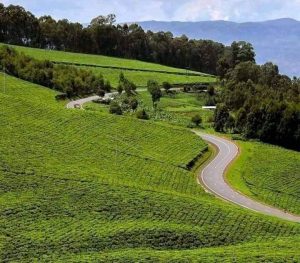
The evergreen Fortportal Tea Estate
Fortportal is famous for having the highest number of crater lakes in Uganda(52)
*#VisitUganda*
*#ExploreUganda*
*#Tulambule* +256 702239 337 Tel / WhatsApp Email: cmkmediasolutions@gmail.com
- If the sugar industry was a product of Asian capital why was it so dependent on State support to survive?
- By Asian capital I mean that the Asians worked hard on the Uganda Railway to make their own capital to invest in the sugar industry. Initially there was no colonial State support but later the colonial State actively supported the Asian sugar industry in Uganda after recognizing them as their colonial agents in their colonial exploitation project. The European Planters Class provided the the two Asian families of Madhvani and Mehta the opportunity to engage in large-scale production of sugarcane.
- Were both Madhvani and Mehta Indian Coolies?
- No. Madhvani is a product or an offspring of the Indian Coolies who came to build the Uganda Railway. Upon the completion of the Railway he established retail shops at railway stations in Busoga. It was there that he accumulated money as an out-grower of sugarcane in what we now call the New World Sugar Order.
On the contrary Kalidas Mehta was not a Coolie. He came with his own capital after working in his brother’s shop in Madagascar and later in Zanzibar for a large Indian Company. He then decided to go to Mombasa and then later come to Uganda by the invitation of an uncle who had a retail shop in Jinja. However, the uncle sent him to a small village called Kamuli where he started a shop with his small capital of 240 Rands. He went on to establish small shops in Teso and Lango then acquired 5000 acres of land in Kyagwe and 2000 acres in Kawolo for large-scale sugar plantation in 1924. He was the first to construct a sugar factory at Kawolo. Madhvani constructed his in 1929 at Kakira on 4000 acres of land.
- How then does the sugar question arise?
- The sugar question can be located on three colonial strands in Uganda and post-colonial governments of Obote and Museveni have replicated this. The first strand is the Land strand. The second is labour strand and the third is the capital strand. I call the three strands the paradoxes of the sugar question in Uganda.
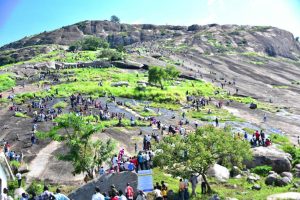
The spectacular and amazing Kagulu hill in Busoga is a scenery every one should endeavour to experience . Visit Uganda. +256 702 239 337 Email cmkmediasolutions@gmail.com - Can you elaborate please?
- The land strand is located within the colonial land policy, which stated that land was not to be allocated to non-Africans. This meant that the colonial policy favored natives at the expense of Asians. Yet Asians wanted land to expand their sugar plantations. How they finally got the land remains a million dollar question
The labor strand was located in the colonial labor policy. This allowed labor migration from outside Uganda to come and work on the sugar plantations. It is this, which ignited the influx of Rwandese and Asian casual laborers, especially from 1926.
The capital strand evolved out of the hard earned money of the Asians after working on the building of the Uganda Railway. As I have explained before Mehta came with his own capital. However, global capital, championed by the British imperial power, gave the Asian sugar plantation owners more capital to engage in large-scale sugar production.
- I have been in a classroom. How then do you link the colonial Asian Sugar Question to the current 2016 Sugar Bill?
- Like the Colonial State, the current post-colonial State, seems to be reinventing the wheel by supporting the old Asian large-scale sugar producers at the expense of the native involved in outgrowing of sugarcane.
- Which other firms is the current government supporting at the expense of natives?
- The popular view is that besides Kakira Sugar Works (KSW) and Sugar Corporation Lugazi (SCOUL), government is also showing preferential support for GM Sugar Uganda Limited, Kinyara Sugar Works Limited, Sango Bay Sugar Limited against natives.
- But we have over 16 small-scale sugar factories in Uganda and at least 5 in Busoga. What happens to them now?
- There are intentions to have them frustrated and eventually forced to close through the politics of zoning.
- What is this politics of zoning Mahir?
- Zoning was a colonial European-Asian model, which zoned land for sugarcane growing between European and Asian Settlers. In this model the Asians and Europeans gazetted land through an enclosure system.
- What is that enclosure system?
- The enclosure system legalized land grabbing from natives to the settlers. The natives were turned into a floating population whereby they were slaves on their own land, growing sugarcane for certain large sugar producing industries for export in Latin America, Caribbean and Asia.
- So what is zoning that I have read in the 2016 Sugar Bill? Is it similar to the zoning in Latin America, Caribbean and Asia?
- I don’t know whether I would be right if I argued that the zoning in Uganda is more or less a replica of the Asian model. However, during the land question debate in the period 2017-2019, Prof. Mahmoud Mamdani introduced the zoning concept as if it was new and advocated for its introduction as a solution to the land Question in Uganda. I wondered whether this strategy, which was meant to dispossess natives of their land could be a solution to the land question in Uganda. Surprisingly the ancient concept of zoning found itself in the Sugar Bill 2016.
To answer your Question explicitly, the zoning of sugarcane growing in Uganda provides that there should be only one Sugar Company within 25 km, which means that the companies will be 50 km apart. It also provides that out-growers are not allowed to sell their sugarcane beyond 50 km. Therefore, the implication is that the out-growers are not price makers but price takers.
- Do you mean out-growers will no longer negotiate prices for their sugar cane?
- Out-growers have never negotiated for prices in the sugar industry. They have just been hunting for the highest price fixer. In the sugar industry the manufacturers fix the price of sugarcane and the out-growers must accept the price or go away. For example, Madhvani buys a tone of sugarcane at 128,000. The Bwayuya Sugar factory buys at 134,000/-. Mayuge factory buys at 130,000/-. GM factory buys at 132,000/-. This means Madhvani pays the least, fears competition and wants to benefit from the politics of zoning.
- Isn’t this zoning politics going to bring a lot of chaos and instability in the sugar industry?
- The zoning is going to lead to the closure of small sugar factories, like Bwayuya in Kaliro, Kiroba in Kamuli, Jinja Sugar Miller’s in Mbiko , Mayuge in Mayuge. This is going to lead to unemployment and deepening poverty. Already chaos has started in Busoga and Parliament against the politics of zoning. The popular Question is: Why not zone cattle, milk and beef? Besides Madhvani is growing sugar on 20,000 acres of land in Busoga he has also sought for 40,000 acres of land in Acholiland through government. Acholi women stripped themselves naked in protest.
- But that is land grabbing! Has Madhvani got the land?
- Through State violence, poor rural communities have lost their land to Madhvani. He has already put up Amuru sugar factory and it is guarded by the military. In 2008 the High Court of Gulu ruled in favor of the natives. When the State appealed in favour of Madhvani and the Court handed over the land to him.
- There seems to be over exploitation of the out-growers in Uganda. If they are price takers and not price makers, then we are not in a liberal economy. In a liberal economy one has the liberty to establish his/her business as long as he/she meets the requirements of the business. Comment on this Mahir.
MB: Its not simply exploitation, but Kleptocracy of the highest order. I was recently reading a script of the benefits out –growers in Tanzania get. The out growers in Tanzania receive a payment on every product of the sugar cane they provide to the industry. Some of the products are: Sugar, fertilizers, Sukali gulu, sweets, electricity, molasses and Waragi. In Uganda, the out-growers only receive payments for the sugar.
OA You seem to be pinning Madhivan sugar industry so much, aren’t you aware that Madhivan has contributed a lot beyond providing sugar? I here he offers scholarships, bursaries, he has set up hospitals and schools. Can’t you commend him at least on these positive aspects?

Breathtaking zipline on Lake Bunyonyi in Kabale
The lake is the deepest in Uganda and famous for canoeing
*#VisitUganda*🇺🇬
*#ExploreUganda*
*#Tulambule*
Tel/WhatsApp +256 702 239 337 Email: cmkmediasolutions@gmail.com
MB Oh Mzee, you seem to be reminding me of what the colonialists did in Uganda. You see these colonialists established hospitals, schools and social amenities. Equally Madhivan has done a lot but with what intention? He has constructed roads in Busoga. I wish you to appreciate that he only constructs Murram roads leading to his sugar plantation firms. True, he has constructed primary schools to offer basic education to his casual laborers. Mark the quality and products of those who have gone through Madhvani schools. He has set up hospitals, I want you to go and carry out the quality of medical services provided in those Madhvani established hospitals. I want to add that Madhvani further taxes out-growers to develop these roads. This tax is called Gasiya tax. Mzeeei, we need to have a comprehensive investigation of the activities of the Madhivan group of companies.
OA With all these many sugar factories in Busoga, what then explains the deepening food insecurity in Busoga. The hiking sugar prices and the immediate finance capital obtained from the sugar cane industry. Land use has changed. Instead of people growing food they are growing sugar cane plantations. Survey reveals that 79% of the land in Busoga is full of sugar cane. Landowners have decided to grow sugarcane at the expense of food. And a good number of them have even gone ahead to cut down coffee and cotton gardens due to the long gestation period and the bureaucracy therein which affects the farmer’s immediate income. I think we need to find time to discuss about the food security question in Busoga sub region. Now, what do you see as the future of the sugar industry in Uganda? Is it not likely to collapse like it did in the early 1970s? It seems people are bitter.
- Francis Fukuyama, in his book “The end of History” argues that what is happening today has happened yesterday and what happened yesterday is happening today. However, there is still chance to save the sugar industry from renewed collapse. A feasibility study was carried out by out growers, which revealed that they needed 200bn shillings to standardise their factory in Mayuge. They requested President Museveni to support them to obtain a loan from the African Development Bank of 100bn shillings. They had already saved 100bn shillings. The President promised to support. Surprisingly the response has been the Bill of zoning.
- Lastly Ugandans are worried about the increasing militarisation of Agriculture. According to President Museveni, it is only the military that can wok to improve agricultural production and distribution in the country. What is your critical view?
- I don’t see any relationship between militarism and agriculture. Guns don’t dig but shoot. Plato and Aristotle have long classified the role of the military as guardians of the State, peasants as the growers of the food. The military culture is different from the culture of the society that grows the food. This is another topic for another time.
- Thank you very much Mahir. I will not say goodbye because you have set the topic for our next discussion.



